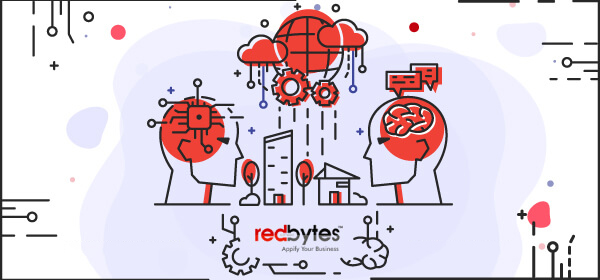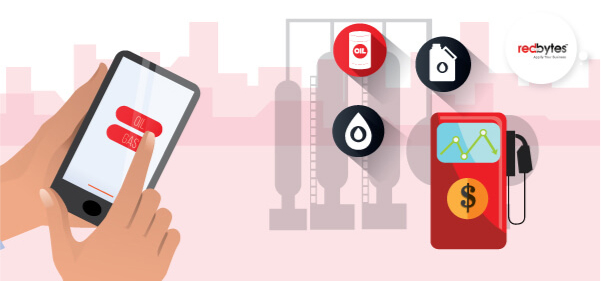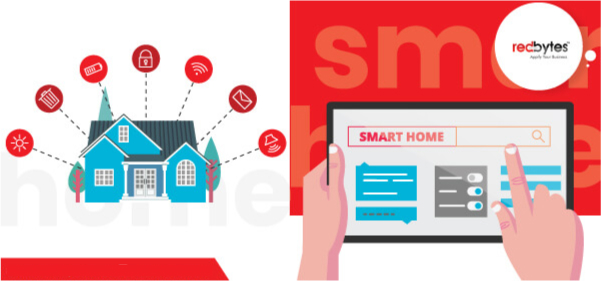Have you ever used masks on Snapchat, found a perfect match for you on Tinder or perhaps watched a movie recommended by Netflix? If you have done any of these before, then you’ve already had a taste of what machine learning can do to mobile apps, knowingly or unknowingly.
A report by Allied Research revealed that machine learning as a service market is predicted to reach a staggering USD 5,537 million in 2023 with an estimated CAGR of 39% between 2017 and 2023.
This is happening at breakneck speed as the number of businesses to adopt machine learning is expected to double at 64% in the next three years.
In the last few years, machine learning has been transforming our lives in multiples ways. Be it through automated surveillance systems, smart assistants like Alexa and Siri, humanoids like Sophia and self-driving cars by 2020, it is pretty much everywhere.
Making gadgets, devices and mobile apps as intelligent as humans, machine learning is a leading component of the digitization efforts being followed by businesses globally.
Read Also: Role of Blockchain in Mobile App Development
With over 90% of CIO’s in agreement with the fact that this level of automation is bound to improve the speed and accuracy of decision making processes, investing in machine learning is this current business landscape is way forward.
Machine Learning Has Infiltrated Various Sectors
Every field including health care, e-commerce, and, of course, mobile apps have found ways to implement machine learning technology in some way or the other. A report by Statista mentioned that machine learning apps attracted USD 29 billion during March 2019.
Using Machine Learning to Revamp Mobile Apps
With cognitive technology on the rise, experts are getting superior at executing jobs via being exposed to relevant data and a bunch of energy-guzzling, cloud-based computer servers that are fitted with specialised processors.
This, on the other hand, has allowed machines to gain senses. Now they are able to perceive, learn and respond as per the requirements of their present environment.
That is a tremendous transformation, indeed.
A lot can be achieved by mobile app developers with the integration of machine learning offerings across sectors. This has been made possible because of the technical competences that mobile apps bring with machine learning.
With such capabilities in place, designing smooth interfaces, improved user experiences and empowering businesses with key features, for example, exact location based suggestions or detecting chronic diseases instantly is a much more seamless process.
Personalisation is the same as the game. It is not just about creating a quality mobile app anymore. You have to do a lot more to ensure that your audience remains loyal to it. And that is exactly where machine learning can assist with some innovative renovations.
1) Personalized Experience

You can benefit from a continuous learning process with the help of machine learning as algorithms are developed to assess data collected via multiple sources such as social media activity, credit ratings that enable pop notifications directly on to the customer’s smartphones.
Users can be categorized depending on their interests. Moreover, by collecting user information, you can also determine the look of your app with the assistance of machine learning by being able to answer the following key questions:
- Who your customers are?
- What do they want?
- What they can afford?
- What hobbies, preferences, and pain points they have?
- What words they’re using to talk about your products?
By structuring your users in this manner, you can identify a more custom designed approach for each customer group and adapt the tone of your communication accordingly.
Here, machine learning allows you to offer your customers with content that is more relevant and inviting that expresses the thought that the mobile apps are actually speaking to them.
Take a look at how these mobile apps are using machine learning to personalise customer communication.
2) Advanced Search

If your goal is to optimise the search functionality in your app in order to deliver enhanced, contextual results, then Machine Learning is undoubtedly the way to go. With the right interventions, it makes the app search more intuitive.
With the application of Machine Learning algorithms, businesses are able to access customer queries and only prioritize results which have relevance to the query generated.
To group articles, FAQs, documents, scripts, DIY videos, etc. into a knowledge graph, cognitive technology plays a vital role that allows users to browse through immediate answers via smart, self-service tools.
The data collected from modern apps includes customer search histories and related action which can later be used to identify patterns of user behaviour, help rank products and services and show only the best matching results to their queries.
Additionally, voice search technology is also a bonus app integration that streamlines the search processes further.
Take the example of Reddit that is using machine learning algorithms to allow their community users to perform advanced search operations.
3) Predicted User Behaviour

By examining a variety of user information such as age, gender, location, search requests, frequency of using the app, etc., ML technology can help businesses and marketers to grasp customer preferences.
But why is this data so important?
The data can enhance your app’s effectiveness and guide your marketing efforts in the right direction to keep your user base engaged and interested in your application.
For instance, your data shows that your app is being used more by females under 35 years in comparison to men. On the basis of this information, you can design your communication to get more male customers interested through targeted marketing campaigns.
ML technologies further assist in crafting recommendations that cater to a more individualised taste of the customer. The idea is to increase user engagement and get them to spend more time on the app.
Here are a few more examples of Machine Learning applications:
4) Relevant Ads

Machine Learning has made display advertising more targeted with messaging more personalised and accurate. The Relevancy Group released a report which states that 38% of executives are using ML as part of their overall strategy for Data Management Platform (DMP) for advertising.
Machine learning enables businesses to stop pushing products and services that have been recently bought by their customers. Drawing on individual customer’s unique purchase patterns and interests, businesses are able to generate targeted ads with the help of Machine Learning.
Being able to predict customer behaviour is a tremendous advantage that can direct promotions through a series of specific communication where the likelihood of a sale conversion is at its highest.
Coca-Cola has incorporated Machine Learning in their user image recognition technology. This helps them to recognise pictures of those products, their own or from the competition of social channels and check the conversations happening around it.
Having this information handy, it was a simple process for Coca-Cola to understand and gauge situations where their target audience is driven to converse about the brand.
This, unquestionably, is one of the best approaches to assess the conversation and serve targeted promotion. This will have an increased probability of being clicked.
Read Also: Why Should Mobile App Developers Consider Flutter in 2020
5) Improved Security

App authentication via video, audio, and voice recognition is a key functionality offered by machine learning. This enables users to authenticate app access through biometric data like fingerprint and face recognition technologies.
Along with that, machine learning also streamlines the user flow through simple log-in processes which are secure.
Malware attacks for online retailers in Asia, Europe and North America last year increased 45% resulting in a whopping USD 3.3 billion loss.
Machine Learning bans suspicious activities via prompt detection. Hence, there is no need to constantly monitor or control the app against such unidentified malware attacks.
Major banks and financial institutions across the globe are also leveraging Machine Learning technologies to analyse transactions, borrowing patterns and social media interactions to arrive at credit ratings.
6) Deep User Engagement

In comparison to all apps available in the store, mobile apps that have been enhanced using Machine Learning are found to generate more user engagement as it is able to offer a broad range of functionalities including real-time customer support. This drives more people to use this app on an everyday basis.
By assessing information, businesses are able to offer adequate support and service enabling them to make more decisions in real-time.
AI chatbots, voice assistants are intelligent digital assistants that are features which can be integrated to offer friendly and prompt support to customers. Build-in translators also provide real-time support, thus improving your overall mobile application workflow.
Snapchat is a great example of an app that has masterfully exploited machine learning and augmented reality that enables its members to transform and redesign images using filters.
Top Mobile Apps That Use Machine Learning
Take a look at some of the top apps that have used Machine Learning to their advantage:
1.Netflix
Netflix has used Machine Learning, specifically linear regression and logistic regression algorithms to create customised content lists for its users. Tracking user behaviour and monitoring the shows that are being watched by Netflix users are some of the data that goes into Machine Learning algorithms.
Hence, when users open the app, they are able to browse through recommended content lists that have been specially curated keeping their individual user preferences in mind.
2.Tinder
This is a dating application that helps you to find like-minded partners. Machine Learning technologies helps in finding the ideal match by using data like images posted and the frequency in which they are swiped. This allows the algorithm to understand and puts forward only those photos which have been observed the most.
3.Google Maps
If you are looking to find a parking slot, Machine Learning capabilities built into Google maps will help you to find a spot.
Read Also: New Technologies Trends Driving Mobile App Sector
Key Takeaways
When it comes to strengthening your business, these are some of the ways by which Machine Learning applications can make it more efficient and user friendly.
With its state of the art search functionalities and authentication that is quick and secure, using Machine Learning to revamp your mobile apps is a definite differentiator that sets your app apart from the rest of the pack.














































































